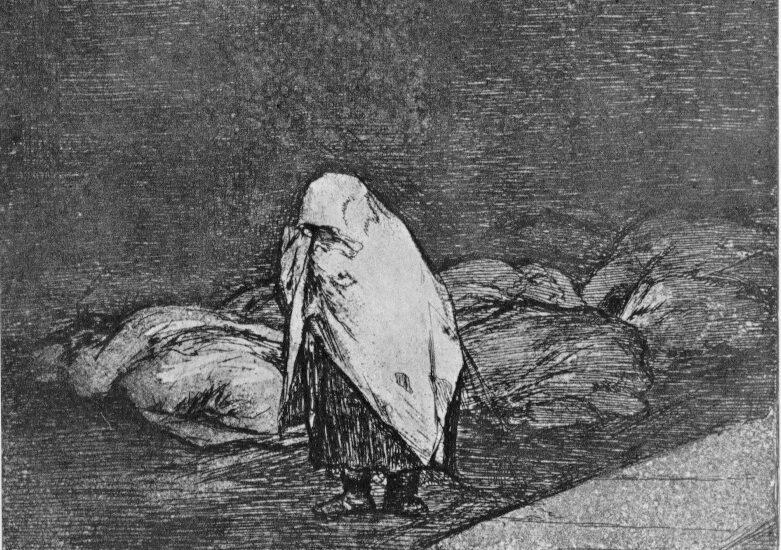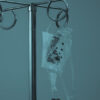
CBC reporter Ian Hanomansing interviewed Brenda Lucki, Commissioner of the RCMP, about the mass shootings of April 18 and 19 and the gunman’s ‘initial motivation’. When reviewing emails circulating among police officers, Ian said, one officer described the shooter’s rampage as “pure evil”. He asked Commissioner Lucki, “[D]oes that line up with what you know about what happened here?” Responding, she said the mass shootings were “… hard to describe… [with] no words to describe it.” We disagree.
There are words to describe this shooter’s behaviours. Descriptive words we all know. This shooter’s rampage is captured in words such as: heinous, atrocious, cruel, and evil. Words easily found in dictionaries. We can even add more words to this list to describe this mass shooter’s behaviours. Words such as revolting, horrific, monstrous, brutal, merciless, ruthless, and vicious.
Ian’s question about whether the mass shooter’s behaviours could be described as evil must not be dismissed. His question takes us back 27 years to 1993. This was the year we came face-to-face with the knowledge that there are those who live, work, and play among us, even in Nova Scotia, whose behaviours must be described as actions of human evil.
Our experience began suddenly. It became and has remained life-altering. When women began telling us graphic details of the torture victimizations they survived, perpetrated by parent(s), other family member(s), a spouse, and like-minded individuals and groups from politicians to professionals, from fishers to farmers. The women used the word “evil” to describe these torturers’ acts. Consequently, for 27 years we’ve processed knowing and explaining these perpetrators behaviours are evil, heinous, atrocious, cruel, revolting, horrific, monstrous, brutal, merciless, ruthless, and vicious.
This shooter’s behaviours
In 2014 we joined 40,000 other individuals in the first forensic research project involving general public participation. The focus was to establish a more informed, fair, and evidence-based method of making legal decisions about the worst-of-the-worst elements of a crime. The outcome was the development of the Depravity Standard. This Standard does not define who is depraved; instead, it categorizes the degree of depravation perpetrated by categorizing the criminal’s (1) intent, (2) actions, (3) attitudes, and (4) choice of the person(s) victimized. Twenty-five specific elements are listed under these four categories. We will apply these four categories and the 25 elements of the Depravity Standard to what has been publicly reported about the shooter’s behaviours.
Starting with intent, we raise 6 out of the 9 elements listed under intent. Elements that apply to the shooter’s intent to emotionally traumatize, humiliate, terrorize, and victimize others. Elements raise questions if prior to the shootings he “showed off” and in ways that intentionally terrorized others. Other elements ask whether his depravity progressively increased and whether his prior behaviours provided excitement for him. Finally, did he maximize the destruction of those he victimized?
Answering these questions means listening to Brenda Forbes’ fears that she experienced the shooter as an extremely dangerous man, so serious that she and her husband left Nova Scotia. The shooter stalked Brenda at home terrorizing her. The shooter inflicted serial assaults and strangled his partner, ignoring the lethality of strangulation and the terrorizing impacts of such victimizations. A witness to the strangulation refused to validate this violent ordeal saying, “No way….He’ll kill me.” A threat heightened by the shooter’s possession of guns.
As to prior behaviours, maybe the shooter thought role playing by dressing up as a police officer was showing-off.
And a woman has told us that when she went to have her dentures fitted by the shooter in his professional role as a denturist, he pressed his crotch into her hand all the while staring at her, continuing to talk to her as if nothing was going on. Did inflicting this sexualized violation excite him? It’s a fair question to think so.
The shooter’s intent was destruction. He committed the worst mass shootings in Canadian history, as well as intentionally setting on fire some of the homes of those he killed.
Actions: All eight elements listed under this category apply to this shooter. For instance, one element asks whether a criminal—whether this shooter disregarded the consequences of his violent acts. The answer is absolutely. There is no indication of restraints to his serial violent actions perpetrated on his female partner, on those he shot and killed, and on the families of those he killed.
Were the shooter’s actions inconsistent with the social context, for instance, within his community of neighbours? In response to this element it is necessary to think back to his stalking of Brenda Forbes because she supported his partner. Did he have excessive responses to trivial events? Indeed he did. Following an argument with his partner he refused her entrance into the house to get her belongings. A male friend went to the house to get her “stuff” and the shooter refused him entry threateningly saying, “I’ve got some guns in the house.” There was the episode where he removed the back tires off his partner’s car to restrict her ability to exit following another distressful argument with him.
Applying other elements means asking whether his actions involved unrelenting physical and emotional forms of victimizations? Serial assaults of his partner are unrelenting forms of physical and emotional victimizations. Were there unrelenting physical and emotional victimizations inflicted on the night of the rampage? Did confining, tying up of his partner, smashing her cellphone, and having guns in the car increase her terror and suffering prior to the shooter’s mass rampage? Without a doubt. Terrorized she escaped and hid in the woods overnight. Did his actions inflict terror and helplessness on others? Yes, considering that community residents were terrified and some remain too terrified to return to the community.
The element of whether the shooter’s actions inflicted exceptional degrees of physical harm or damage is answered by listing his infliction of 13 femicides, 9 homicides, wounding another, wounding dogs, burning homes, shooting and wounding a RCMP officer, shooting and killing RCMP officer Heidi Stevenson, taking her weapon and ammunition, then killing a man who stopped to help and stealing his SUV, and killing again and stealing another vehicle. And did he carry out his crimes close to those he victimized? Totally, in that prior to his mass shootings he began by assaulting and terrifying his partner, then he began killing his community neighbours.
Attitudes: The shooter’s attitudes were illustrated in all of the five elements listed. Such as applying the elements of indifference and disrespect regarding the harmful impacts his victimizing actions had on his female partner. As previously noted, he did not care whether witnesses were present when he had his female partner on the ground beating and strangling her. And he began stalking Brenda for speaking out against his harmful impacts of assaulting his partner. Did he have pleasure regarding these actions? The serial violence against his female partner and his stalking of Brenda Forbes are attitudinal expressions of misogyny and patriarchal male domination and oppression of women. Such attitudes permit a criminal—permitted the shooter to project responsibility onto the women he victimized and feel entitled to do so.
Did the shooter falsely implicate others in wrongdoing? For instance, the shooter refused to remove his name from the sale of a property that his uncle claimed was his. A court ruled in favor of the uncle.
Choice of victim(s): There are three elements under this category. Firstly, that a perpetrator victimizes a person they were in relationship with; secondly, the perpetrator was prejudiced against the victimized person, and thirdly, the perpetrator rendered the victimized person vulnerable and helpless. This shooter was a serial assaulter of his partner. Prior to his mass shootings he immobilized his partner by tying her up, attempting to render her vulnerable and helpless. Misogyny is a form of prejudice against women—against his female partner, against Brenda Forbes, and his sexualized violation of the woman while he was fitting her dentures.
Describing who he is, for instance an ‘injustice collector’ versus placing attention on his behaviours is critically unwarranted. Because this diverts attention away from the years of abusive behavioural warning signs and notifications that he was a dangerous man living in Nova Scotian communities. It invisibilizes his serial life-threatening misogynistic-based behaviours and his eventual rampages—which were not unpredictable. For us, the focus must concentrate on this shooter’s criminal depravity. He was a dangerous man whose behaviours can be described as actions of human evil.
Feminist analysis: Misogyny, femicide, and male violence against women
A public independent inquiry or review in Nova Scotia must analyse systemic misogyny within the RCMP. Nova Scotia RCMP said they were unaware that misogyny was involved which, to us, suggests a pattern of disregarding reports of male violence against women, and a lack of knowledge about the degrees of violent lethality male violence inflicts against women. In previous articles we shared women’s stories—Jolene, Jane, Lynn, and Sara—of experiencing RCMP officer’s intimidation, ignoring reports of violent victimizations, or receiving no support.
Brenda Thompson explains her experience of supporting a woman who was victimized by her boyfriend. She said, “It was in February, with a snow storm brewing. The RCMP refused to take the abuser out of the house even though the house was in her name….They told her to let him stay…for the night until the storm was over but, ‘Don’t call us unless there is blood.’ It was utterly shocking that they would say that….I stayed with the woman for a few hours while the abuser raged and threatened. I left my cell phone with the woman in case of an emergency…[I] went to her house first thing in the morning…scared to death of what I would find. But he had left.”
A transformative public independent federal-provincial inquiry or review must occur. It needs to acknowledge there are those who live, work, play, and volunteer among us who intentionally commit acts of human evil within relationships and within communities. Healing is helped when having the language to explain one’s victimization, to be truly heard and understood. From this moment on, if it is comforting to describe the depravity of this mass shooter’s crimes using the word “evil” this is acceptable truth-telling—as is using any of the words listed on the side panel.
We call on women to speak out about male violence they have experienced. There must be no holding back on demanding a public independent inquiry or review. Assessing how the RCMP and communities respond to complaints of male violence against women and to address femicide prevention, and systemic misogynistic sexism.
We must not be stuck as Commissioner Lucki was when saying there were “no words to describe it.” We disagree—there are many words to describe the shooter’s actions—evil is one such word!
See also;’ Petition: End femicide and misogyny in Nova Scotia. An inquiry now!

Jeanne Sarson, MEd, BScN and
Linda MacDonald, MEd, BN
Co-founders Persons Against Non-State Torture (NST)
Human Rights Defenders
361 Prince Street, Truro, NS, Canada B2N 1E4
P: 1.902.895.6659 | C: 1.902.956.2117 | twin2@eastlink.ca
www.nonstatetorture.org
contact@nonstatetorture.org
With a special thanks to our generous donors who make publication of the Nova Scotia Advocate possible.
Subscribe to the Nova Scotia Advocate weekly digest and never miss an article again. It’s free!




this is a first rate analysis. Thanks for writing this!!
You’re most welcome Judy, thank you for your feedback as it is much appreciated.
Judy, you are most welcome. I do think it is most important that we need to seek clarity about such heinous actions. Thanks for reading the article.
Jeanne and Linda:
Belated thanks for cutting through so much of the b.s that has obscured the true nature of these horrendous events and that has distracted Nova Scotians from seriously addressing what has been so obvious to anyone who chose to see. I send a small token of appreciation for the magnificent determination, empathy and skill you two have demonstrated for decades in this province. You have been the lone port in many storms for women in desperate need of help and understanding.
Jim, thank you for taking time to share your thoughts with Linda and I, very much appreciated because as you have so observed “lone ports” are as you say going forward regardless of the barriers.